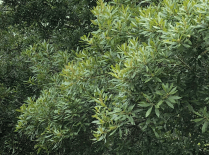

Although the wood is reported to be heavy, very hard, strong, brittle and close-grained, this species is different than the Oregon Myrtlewood, Umbellularia californica, (AKA California Bay Laurel) used for artistic endeavors found in gift shops all along the Oregon coast. A gray-brown or maroon-purple dye may be obtained from the berries. Use by People: Although Pacific Wax Myrtle is related to the Northern Bayberry, attempts at boiling the fruit to extract wax produces so little, to make it hardly worthwhile. Used by Wildlife:The fruit is eaten by many kinds of birds, most notably the “Myrtle” (Yellow-rumped) Warbler, but only in small quantities. Wax Myrtle also is able to fix-nitrogen in association with the bacteria, making this shrub especially useful for habitat restoration in soils with low fertilityįruit ripens November. Several can be trimmed into a hedge or it can be mixed with other evergreens to create an informal screen.

Uses In the Landscape: The Pacific Wax Myrtle is our best native shrub for screening. The flowers are tiny, but the fruit is attractive in clusters of dark purple, bumpy berries.Īttributes: The leaves of Myrica californica have a spicy aroma that can be used like bay leaves to season food, hence the plant is often referred to as California Bayberry. Habitat:Usually occurs in wetlands but occasionally occurs in non-wetlands.Ĭharacters: The leaves of Pacific Wax Myrtle are a bright, glossy green with black dots, pleasantly aromatic, pointed at the tip, with occasional teeth along the margins. Growth: moderate rate to 10-30 feet (3-10m) tall and wide


 0 kommentar(er)
0 kommentar(er)
